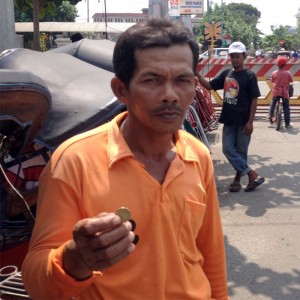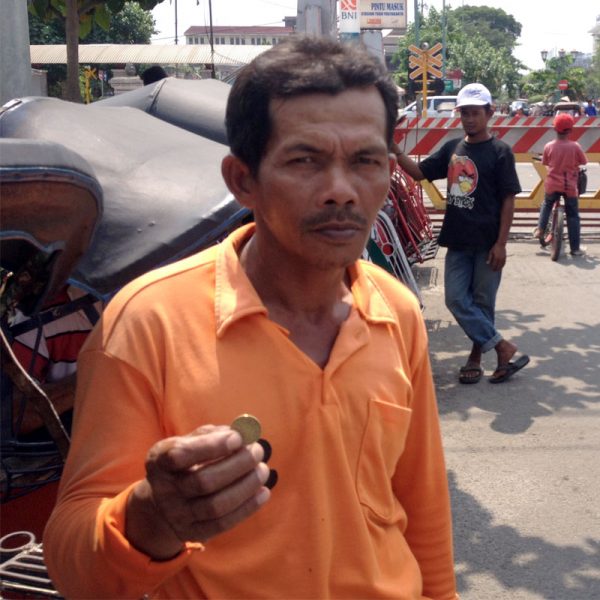
A conversation about world of healing would be incomplete without mentioning the wonderful world of kerokan.
Kerokan, synonymous with masuk angin, is the storied act of grinding a coin against the skin to release wind that has entered the body and caused symptoms tantamount to that of the common cold. Most photos on the Internet depict cringe-worthy scenes of carmine skid marks down the backs of self-diagnosed sufferers. Inaro, who spends most days as a becak driver based at the Jogjakarta train station within spitting distance of Jalan Malioboro, doubles as the area’s go-to kerokan practitioner. Real kerokan, or kerok, starts at the neck and goes all the way down the legs.
While Western medicine insists on chicken soup and Sprite to fight against the symptoms of the common cold, Indonesian tradition leans towards an ancient coin scraping artistry that most anyone can perform.
“The key is in the way you hold the coin,” explains Dinaro over the cry of the train-crossing gates. “You have to hold it like this. You have to flip it so the thick side is on the skin.” While many questions arise when it comes to kerokan, the first brow-furrowing question in the cross-examination has to do with pain. Inaro shakes his head and quietly dismisses the conjecture. “The same way that reflexi sometimes hurts is the same way that kerokan works. You have to get in there.”
Meanwhile, most kerokan specialists, who insist that the redder the marks, the more angin (wind) is released, are quick to point out that treatment is all a question of your personal pain threshold. Proponents of the roadside treatment insist that the coin service increases blood flow and oxygen to the body. Sceptics, however, would insist that while kerokan has been practiced for centuries throughout Indonesia, there is no proof that it in any way provides health benefits.
Inaro insists that kerok is simply a way to fend off early symptoms before your cold or flu gets worse. “Obviously,” says the 45-year-old who has worked as a beck driver for more than a decade, “if you’re genuinely sick, you should see a doctor. Kerokan isn’t medicine. If you think you need medicine you should see a doctor. Almost anyone who has ever had kerokan or seen someone get kerokan can turn around and provide the service themselves. We do it all the time here while we are waiting for the train and the customers.”
Inaro explains that in the fleet of waiting becaks, there’s always someone who is feeling a bit tired, coughing and displaying flu-like symptoms.
“All you need is a coin,” he says with a smile. “Rather than swallow a bunch of pills or drink some medicine from a store, kerok is a natural way to fight against a cold. Natural is always good. It’s local knowledge passed down through generations, not some stuff in a fancy package.”
The jury is still out on kerokan. But, like most traditional Indonesian medicines—jamu, massage and other healing measures—there is a strong coalition of adherents who openly subscribe and swear by the alternative knowledge technique. Maybe the most important question is how much the treatment costs?
“How much you got?” Inaro says with a joking smile.
It looks like laughter is still the best medicine.




